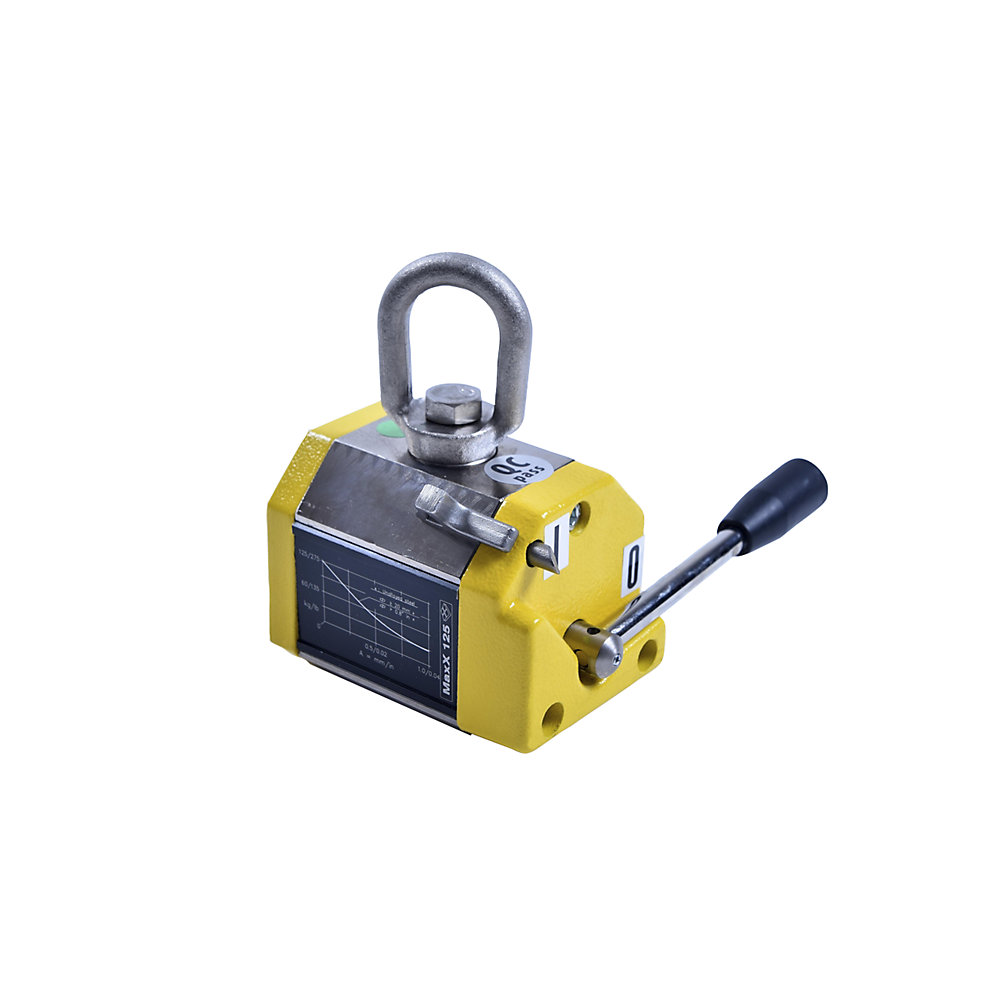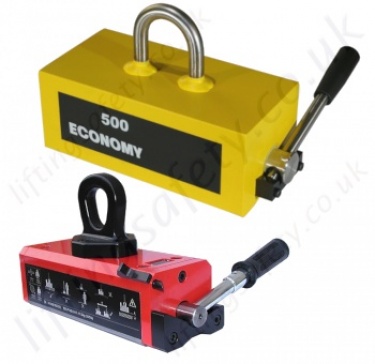Products
- Lifting Magnets Harbor Freight
- Industrial Magnetic Lifting Devices
- Lifting Magnets 600#
- Lifting Magnets 2000 Lb Capacity
Magnetic Tools
Walker designs and manufactures lifting magnets for a wide range of applications using permanent, electro-permanent, battery powered, and electromagnetic technologies. Walker Self-Contained Lifting Magnets are versatile, compact, easy to operate and can be.
- Single handed operation for handling small parts
- Finger tip release
- Optional Stainless Steel lower case for hot or abrasive applications
Magswitch lifting magnets are the solution for your heavy lifting, plate handling applications, sheet alignment and de-stacking needs. Built to be fail-safe, our heavy lifting magnets have the capacity to hold strong on both thin and thick steel. They eliminate time consuming handling of hooks and chains when you load and unload your burn tables. Lifting magnets make quick work of difficult, time-consuming steel handling. Magnets possess a unique property of attraction which can be harnessed to ease and speed one’s work. The payoff is an immediate improvement in efficiency and operating economy. For safely lifting and transporting flat or round steel objects, MSC offers a range of lift magnets with different load capacities. The load is held by the power of the permanent magnet.
Electromagnets
- Flat Faced and BiPolar Electromagnets
- Battery operated lifting magnets
- Custom built Electro-magnets
Demagnetizers
- Designed for continuous operation and need no maintenance
- Demagnetize milling cutters, drills and small parts
- Round and rectangular openings
- Special sizes & voltages
Rectifier Controllers
- Manual
- Automated
- Chuck Controls
Chucks & Sine Plates
- Permanent Magnetic Chucks
- Rotary Electromagnetic Chucks
- Rectangular Electromagnetic Chucks
- Magnetic Sine Plates
Magnetic Filters
- Fluid Line Filters
- Coolant Filters
- Special Coolant Filters
- Filter Bag Magnets
- “T” Series Tramp Iron Trap
- Magnetic Hopper Grates
Magnetic Sweepers
- Road Sweepers
- Magnetic Sweepers
Repair Facilities
- Magnetool has the facilities to repair any make of electromagnetic chuck or permanent magnetic chuck.
We Specialize In

- Multilifts
- Demagnetizers
- Electromagnets
- Magnetic Sweepers
- Permanent Magnet Chucks
- Magnetic Sine Plates
- Magnetic Filters
- Electromagnetic Chucks
- Custom Magnetic Equipment
- Magnet Material
- Magnetic Coolant Cleaners
- Rectifier Controllers
About Us
Magnetool, Inc. is a veteran owned company that was established in 1951. We have a fully equipped 40,000 square foot engineering and manufacturing facility located in Troy, MI.
Lifting Magnet Safety
Lifting magnets have been in wide use for many years. In the past 20-years, rare earth materials have allowed the design and manufacture of much stronger and high capacity magnetic lifting systems. Managers and workers must be made aware of safety precautions to follow while operating these powerful magnetic devices. Even a minor lapse in the proper operating procedure can cause serious or fatal injury.
To this end, the American Society of Mechanical Engineers (ASME) continues to set new guidelines and safety standards for the operation of lifting magnets, some of which are engineered to lift up to 10,000 lbs. without slings, hooks, or cables.
Both permanent and electric-rated lifting magnets fall under the compliance standards established by ASME B.30.20-3. The scope of this section of the ASME code applies to close-proximity lifting magnets and specifically the marking, construction, installation, inspection, testing, maintenance, and operation of these types of magnets when used for single or multiple steel piece handling operations.
In addition, ASME B.30.20-3 addresses compliance guidelines for when the operator of the lifting magnet is required to manually position the lifting magnet on the load and manually guide the load during its movement (see Figure 1). It also applies to the use of remotely operated lifting magnets when used in close proximity to people.
Lifting magnet injuries can range from pinched fingers to crushed hands to the loss of extremities. For these reasons, plant managers responsible for safety training for the protection of workers should strictly adhere to the ASME compliance guidelines.
Section 20-3.4 of the ASME code addresses several safety-related issues, including qualifications and training for operators, personnel conduct when using lifting magnets, and standard operations practices. Metal fabricators needing assistance can contact the manufacturers of their industrial lifting magnets, many of which have established detailed training and safety steps for customers to help them comply with ASME B.30-20.
Overall Lifting Magnet Safety
Some general safety guidelines that pertain to all lifting magnets and plant operators that follow ASME B.30.20 procedures include:
- Read and understand all instructions before operating any lifting magnet.
- Know magnet capacity for material thickness being lifted.
- Remove magnet from service if capacity or “safety first” tags are missing.
- Exercise caution when handling iron or steel materials near magnets.
It is very important that “strong magnet” warning labels be placed on or next to the area where the lifting magnet is being used. This will warn anyone in the area that extreme caution should be used in proximity to the magnet. Lifting magnets should already have warning labels affixed to them when they arrive from the manufacturer (see Figure 2).

Operators need to be aware of items in the area where magnets are being used, as they may inadvertently attract to carbon steel chutes, carts, tables, pipes, I-beams, or other magnets in a split second. If a worker’s hands or fingers are caught between the magnet and carbon steel, his fingers can get pinched, trapped, or even crushed in extreme cases. Therefore, employee training is crucial.
Workers should never stand below a lifting magnet or any lifting device carrying a load because of the potential for a dropped load. The rule of thumb is to stay out of the path of the overhead magnet as it transports loads from one area to another.
In the case of electromagnets, dropped loads can happen even without a total power loss. A split-second power spike is enough to disable the magnet and cause serious injury when the load releases.


Lifting Magnets Harbor Freight

Another potential for a dropped load is an oily surface on the magnet, which may attract debris that interferes with surface contact between the magnet and the item being lifted. As the workpieces are lifted from the ground or conveyor belt, they may not be fully engaged with the overhead magnet. This is difficult to detect from a worker’s viewpoint, so it’s best to assume a safe distance.
Factors Affecting Lifting Magnet Operation
ASME B.30.20-4 addresses compliance issues when operating a lifting magnet. These recommended guidelines about the materials being lifted assist in creating a safe operating environment around the lifting magnet.
Composition. Be sure the material being lifted is made of steel. Alloys may not be as magnetic as low-carbon steel.
Industrial Magnetic Lifting Devices
Configuration. The material should be as flat as possible, without any waves or bows. Check for dunnage between pieces that could cause the material to sag at some points. Use a straight edge to check flatness. (The longer the straight edge, the better.)
Lifting Magnets 600#
Surface Condition. The material surface must be as clean as possible (see Figure 3). Elements of rust, dirt, ice, snow, oil, or paint are all considered to be an air gap that creates a weaker pulling force. Make sure the full surface of the magnet is in contact with the material. For example, a cutout in the piece being lifted affects the magnet’s lifting capacity if the cutout is directly under the face of the magnet.
Weight. Verify the weight of the part before using a lifting magnet. (Steel weighs 0.238 lbs. per cubic inch.) To determine the total weight of a steel part, use this formula: Length (in.) x Width (in.) x Thickness (in.) x 0.283 lb./in.3.
Thickness. Thinner materials are more challenging to lift than thicker materials because thinner materials can’t accept all the lines of force, resulting in reduced capacity. This is not a linear function. For example, if a magnet’s full capacity is needed to pick up 1-in.-thick material, that doesn’t mean that half the magnet’s capacity can pick up 0.5-in.-thick material.
Temperature. The maximum recommended material temperature for ceramic permanent lifting magnets is 200 degrees F. The maximum recommended material temperature for electromagnets is 600 degrees F. Modifications may be possible on some magnets to lift higher-temperature materials.
Lifting Magnets 2000 Lb Capacity
In some cases, lifting magnets can lose strength, depending on the magnet’s characteristics. Permanent magnets do not lose their strength unless they are physically damaged (dropped and broken), subjected to extreme heat (200 degrees F), or subjected to a high electric field, such as welding.
Electromagnets can lose strength if coils burn out from being left on too long (15 minutes maximum unless constructed for continuous duty cycle) or parts in rectifiers fail. If an electromagnet suddenly stops working, it is likely that an electrical change has occurred in the building. Plant operators should be sure to supply the correct AC voltage to the rectifier.
Other Precautions With Lifting Magnets
Placing an electronic device in fairly close proximity to a lifting magnet can cause a loss of data or some type of erasure. Generally speaking, magnets are harmful to the magnetic storage devices on a computer, such as hard drives, floppy drives, and flash drives.
Anything with magnetic storage—including a cell phone—should be kept as far away as possible from the lifting magnet to avoid critical data loss.
Some medical devices, such as pacemakers and surgically implanted intracranial aneurysm clips, can be adversely affected by strong magnetic fields. Workers who have these medical devices are encouraged to keep away from operating lifting magnets.
Metal fabricators are more concerned with making metal parts and meeting delivery dates than ensuring their lifting magnets stay in compliance with ASME B.30.20. Those interested in maintaining the performance of their lifting magnets should check with a magnet manufacturer, which can regularly inspect the lifting magnet surface for any deficiencies; check the condition of handles, safety latches, and lifting ball and eye hooks; and inspect for cracked housings, welds, loose bolts, and missing warning labels and capacity markings.
If you are in need of inspections, repairs of existing magnets or are looking at a new magnet system, give your local CRANE 1 office a call for immediate assistance.
